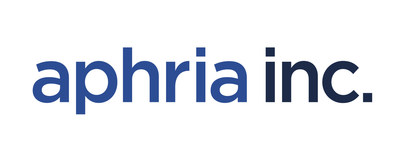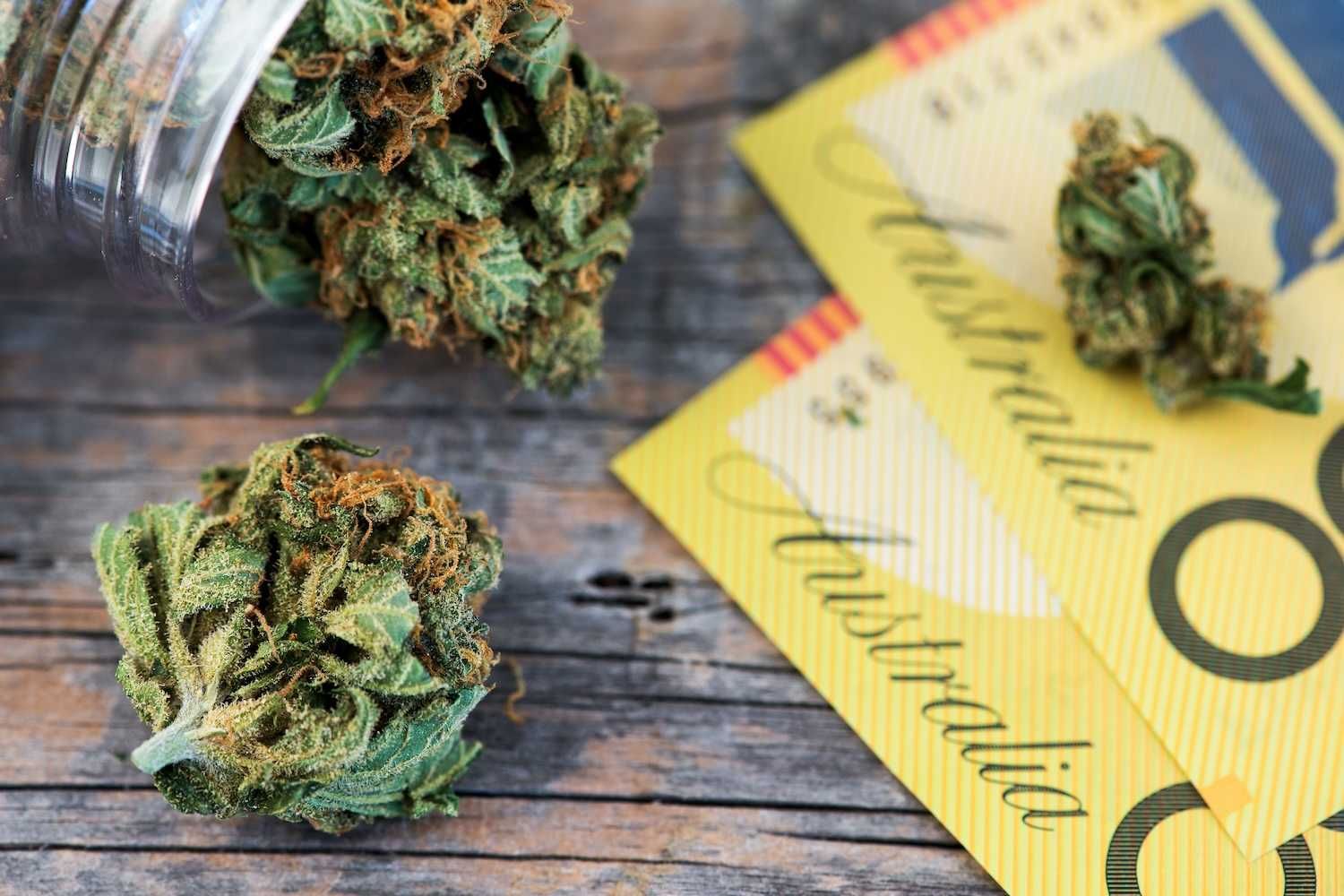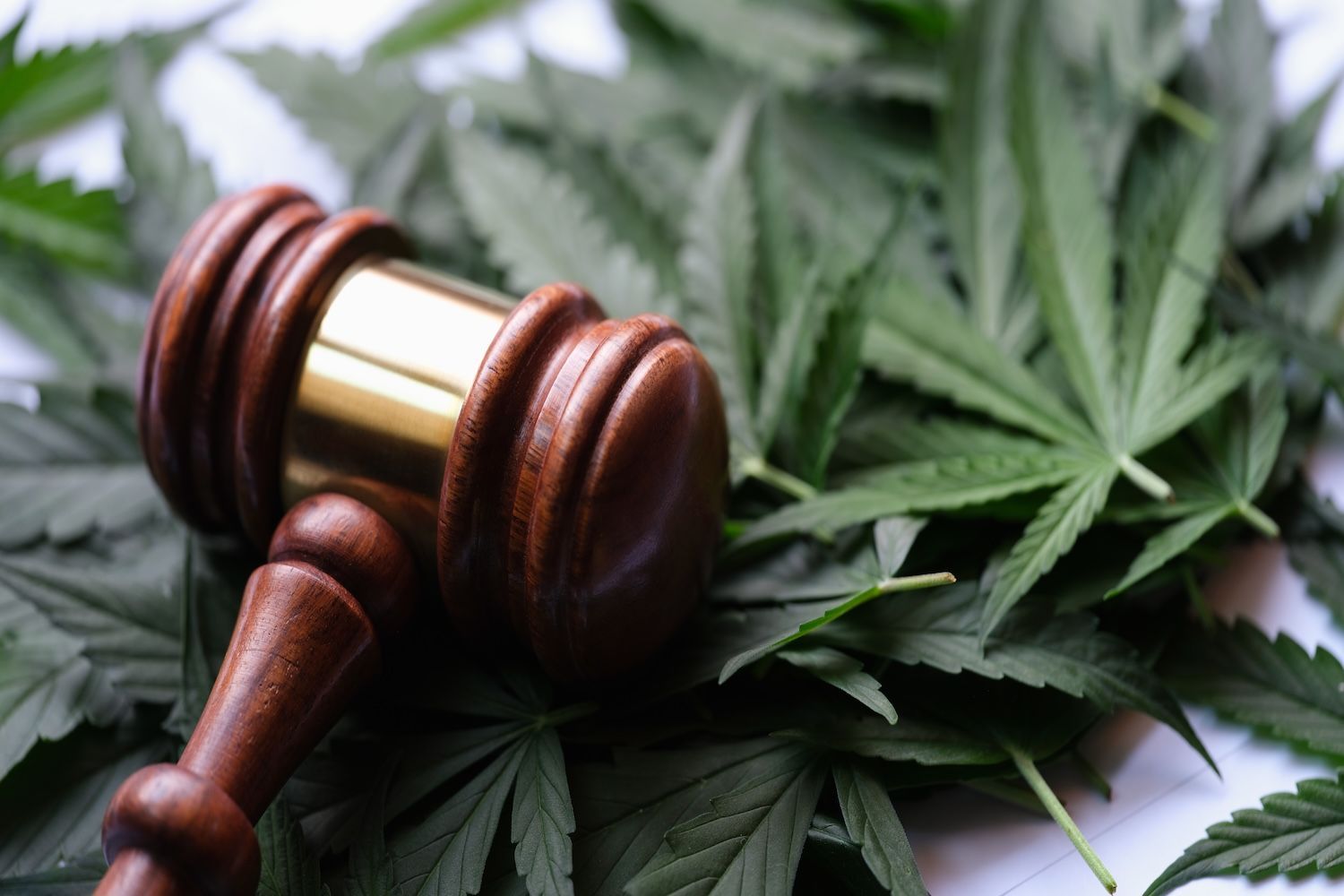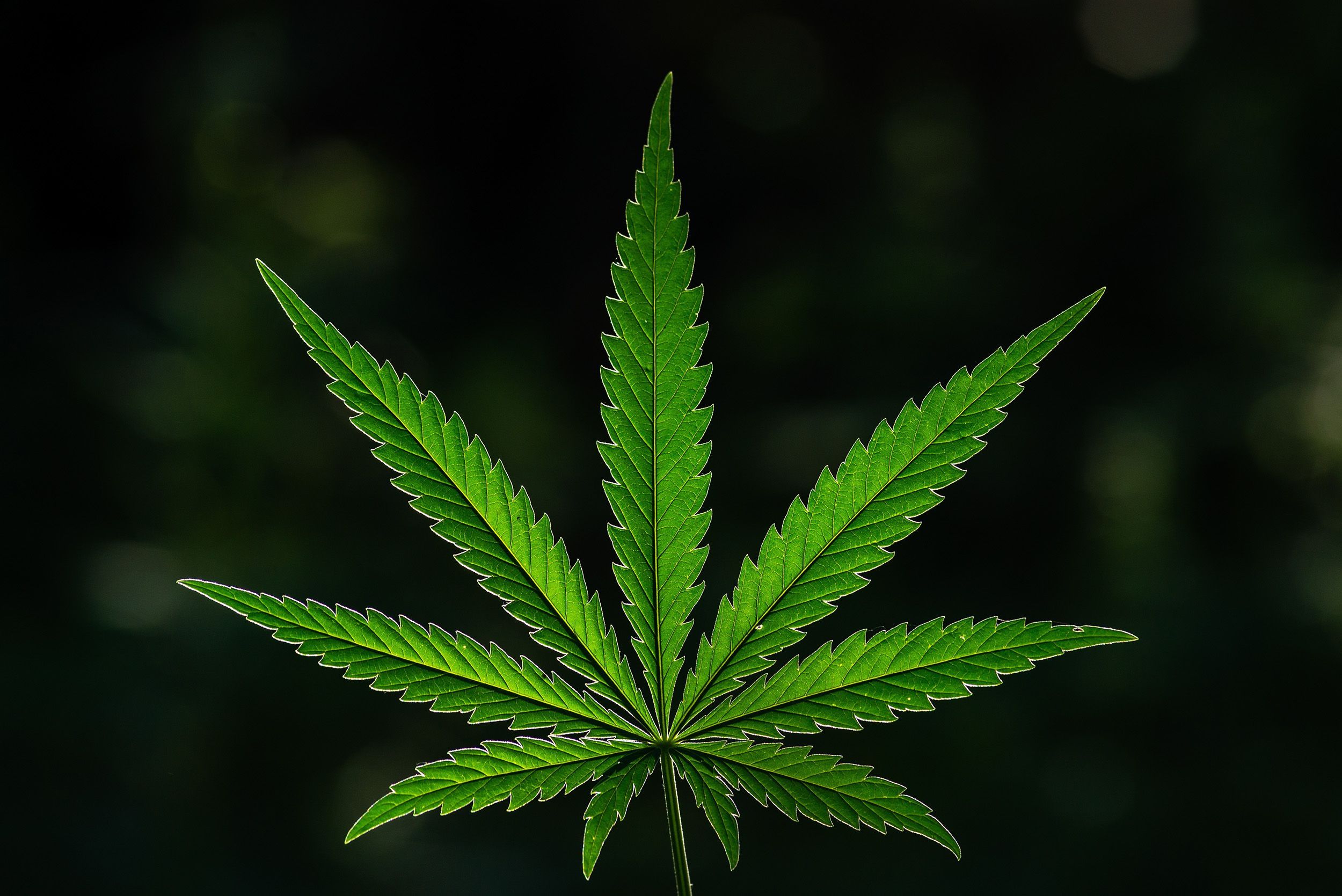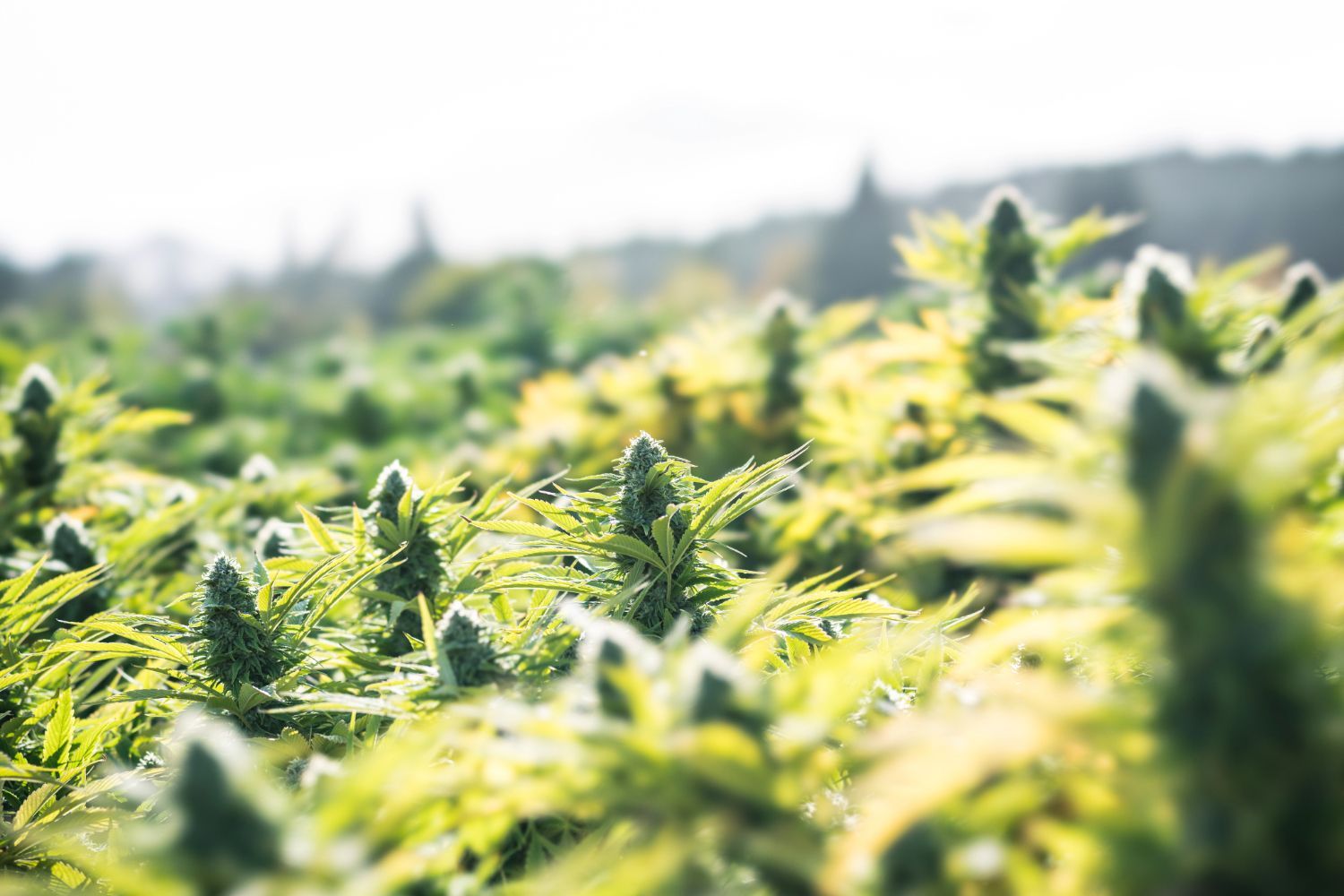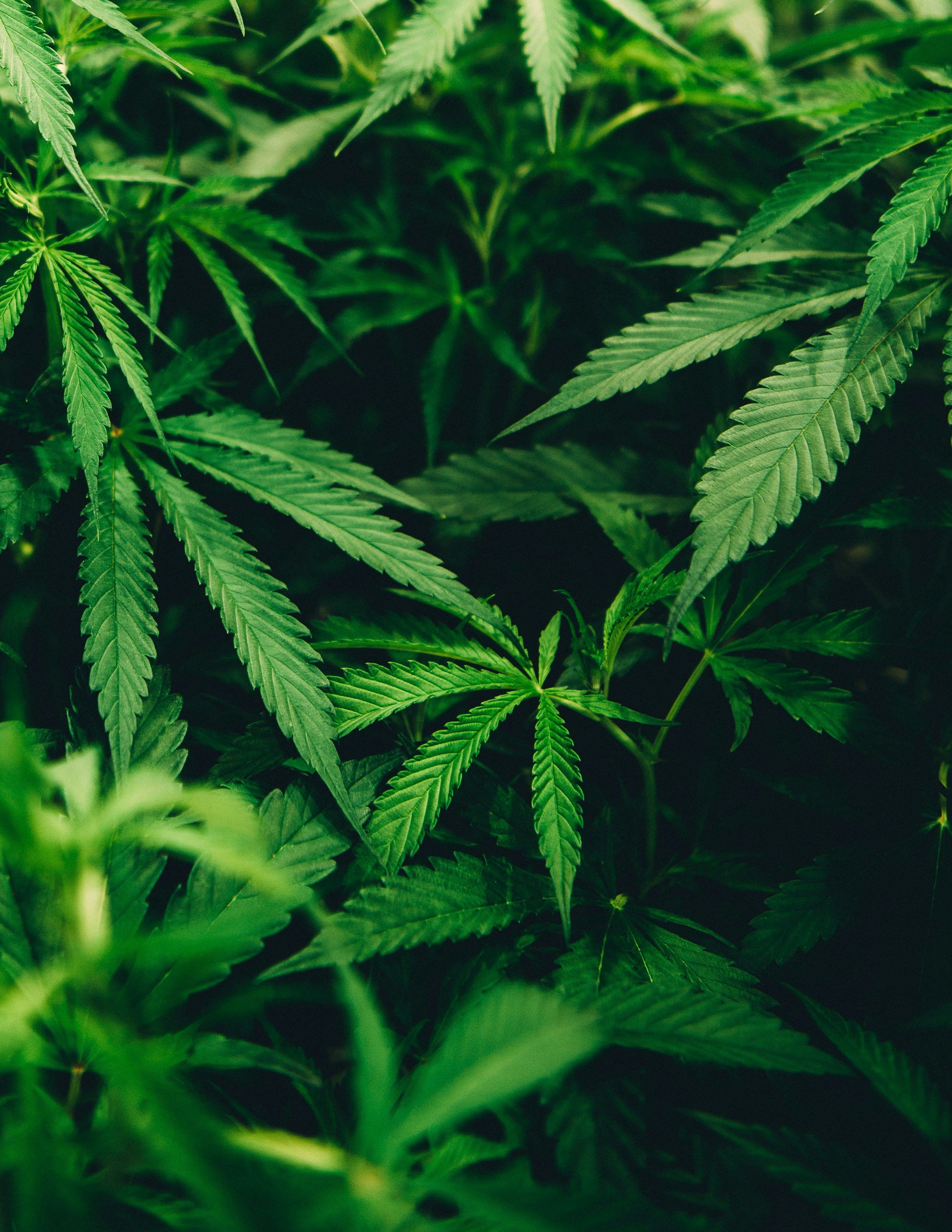Net Cannabis Revenue Increased 103% from Prior Year Quarter
Adjusted EBITDA from Cannabis Business of $10.4 Million Increased 11% from Prior Quarter
Cash Cost Per Gram Remained Below $1.00 and Decreased for the Fourth Consecutive Quarter to $0.87
Aphria Inc. (" Aphria " or the " Company ") (TSX: APHA) (Nasdaq: APHA), a leading global cannabis company inspiring and empowering the worldwide community to live their very best life, today reported its financial results for the first quarter ended August 31, 2020 . All amounts are expressed in Canadian dollars, unless otherwise noted and except for per gram, kilogram, kilogram equivalents, and per share amounts.
"Our strong first quarter results reflect the continued robust growth and development of Aphria's adult-use cannabis brands in Canada ," said Irwin D. Simon , Chairman and Chief Executive Officer. "We are consistently taking a diversified approach to our innovation, strategic partnerships, global expansion and corporate citizenship to fuel sustainable, long-term growth. We believe that the strength of our balance sheet and cash position, combined with our consistent focus on our highest-return priorities, will generate sustainable long-term value for all stakeholders."
Key Operating Highlights – First Quarter Fiscal 2021
- Record gross revenue for adult-use cannabis of $69.6 million in the first quarter, an increase of 23% from prior quarter and the sixth consecutive quarter of growth.
- Net cannabis revenue of $62.5 million in the first quarter, an increase of 103% from prior year quarter.
- Net revenue of $145.7 million in the first quarter, an increase of 16% from prior year quarter and decrease of 4% from prior quarter, solely due to lower distribution revenue driven by the COVID-19 global health crisis.
- Cash cost to produce dried cannabis per gram of $0.87 in the first quarter, a decrease of 1% from the prior quarter, and decreased for the fourth consecutive quarter.
- Adjusted EBITDA from cannabis business of $10.4 million in the first quarter, an increase of 11% from the prior quarter.
- Adjusted EBITDA of $10.0 million in the first quarter, an increase of 17% from the prior quarter.
- Ended first quarter with a strong balance sheet and liquidity, including $400.0 million of cash and cash equivalents to fund planned Canadian and International growth.
- Aphria transferred its stock exchange listing from the New York Stock Exchange to The Nasdaq Global Select Market ("Nasdaq") on June 8, 2020 . This transition did not impact the Company's primary listing on the Toronto Stock Exchange (TSX: APHA).
- Filed Prospectus supplement for $100 million (USD) At-the-Market program ("ATM Program") on July 29, 2020 which the Company plans to use for acquisition opportunities.
- Good Supply and P'tite Pof launched large-format SKUs, and launched new brand B!NGO, a large format, economy brand utilizing lower potency cannabis.
Subsequent Events
- Aphria entered into a Strategic Supply Agreement with Canndoc Ltd. ("Canndoc"), a subsidiary of InterCure Ltd., (TASE: INCR/INCR.TA), one of Israel's largest and most established medical cannabis producers on August 4, 2020 .
- Liquidated the convertible note receivable from HydRx Farms Ltd.
- Company completed its first certified European Union Good Manufacturing Practices ("EU GMP") shipment of dried flower from its Aphria One EU GMP facility to CC Pharma, a leading distributor of pharmaceutical products to more than 13,000 pharmacies in Germany .
Key Financial Highlights
(In thousands of Canadian dollars)
| | | |
| | Three months ended | Three months ended |
| | August 31, 2020 | August 31, 2019 |
| Net revenue | $145,689 | $126,112 |
| Gross profit | $75,279 | $45,421 |
| Adjusted cannabis gross profit 1 | $31,530 | $15,331 |
| Adjusted cannabis gross margin 1 | 49.7% | 49.8% |
| Adjusted distribution gross profit 1 | $11,802 | $12,223 |
| Adjusted distribution gross margin 1 | 14.4% | 12.8% |
| Net (loss) income | ($5,095) | $16,441 |
| Adjusted EBITDA 1 | $10,006 | $1,035 |
| | | |
| | | |
| | Q1-2020 | Q4-2020 |
| Distribution revenue | $82,198 | $99,137 |
| Net cannabis revenue | $62,491 | $53,066 |
| Net revenue | $145,689 | $152,203 |
| Kilograms (or kilogram equivalents) sold 1 | 20,882 | 12,557 |
| Cash cost to produce dried cannabis / gram 1 | $0.87 | $0.88 |
| "All-in" cost of goods sold / gram 1 | $1.41 | $1.69 |
| Adjusted EBITDA from cannabis business 1 | $10,399 | $9,360 |
| Adjusted EBITDA from businesses under development 1 | ($2,820) | ($2,745) |
| Adjusted EBITDA from distribution business 1 | $2,427 | $1,943 |
| Cash and cash equivalents & marketable securities | $400,019 | $497,222 |
| Working capital | $725,512 | $732,908 |
| Capital and intangible asset expenditures -wholly-owned subsidiaries 1 | $15,808 | $25,569 |
| Source: Aphria Inc. August 31, 2020 MD&A1 1 |
| _______________ | |
| 1 | In this press release, reference is made to adjusted cannabis gross profit, adjusted cannabis gross margin, adjusted distribution gross profit, adjusted distribution gross margin, adjusted EBITDA, adjusted EBITDA from cannabis business, adjusted EBITDA from distribution business, adjusted EBITDA from businesses under development, gram equivalents, cash costs to produce dried cannabis per gram, "all-in" cost of sales of dried cannabis per gram and capital and intangible asset expenditures – wholly-owned subsidiaries, which are not measures of financial performance under International Financial Reporting Standards (IFRS). These metrics and measures are not recognized measures under IFRS, do not have meanings prescribed under IFRS and are as a result unlikely to be comparable to similar measures presented by other companies. These measures are provided as information complimentary to those IFRS measures by providing a further understanding of our operating results from the perspective of management. As such, these measures should not be considered in isolation or in lieu of review of our financial information reported under IFRS. Definitions and reconciliations for all terms above can be found in the Company's Management's Discussion and Analysis for the three months ended August 31, 2020, filed on SEDAR and EDGAR. |
Net revenue for the three months ended August 31, 2020 was $145.7 million , an increase of 16% from $126.1 million in the same period last year. First quarter fiscal year 2021 net revenue was 4% lower when compared to the prior quarter net revenue of $152.2 million , as significant increases in net cannabis revenue were offset by lower distribution revenue at CC Pharma in Germany. The decline in distribution revenue is largely a function of the impacts of the COVID-19 global health crisis, including a reduction in the number of elective medical procedures and in-person visits to physicians and pharmacies
The average retail selling price of medical cannabis, before excise tax, increased to $7.38 per gram in the quarter, compared to $6.63 in the prior quarter. The average selling price of adult-use cannabis, before excise tax, decreased to $4.15 per gram in the quarter, compared to $5.23 per gram in the prior quarter, primarily as a result of the initial pipeline fill of new large format offerings, including the introduction of B!NGO, an economy brand utilizing lower potency cannabis.
Adjusted cannabis gross profit for the first quarter was $31.5 million , with an adjusted cannabis gross margin of 49.7%, compared to $28.1 million and 52.9% in the prior quarter. The increase in adjusted cannabis gross profit and decrease in adjusted cannabis gross margin was primarily due to the release of large format products and the pipeline fill for B!NGO, our economy brand utilizing lower potency cannabis, which provided an increase in sales but at lower margins than the Company's other branded products.
Adjusted distribution gross profit for the first quarter was $11.8 million , with an adjusted distribution gross margin of 14.4%, compared to $11.9 million and 12.1% in the prior quarter. The decrease in adjusted distribution gross profit was a result of the previously discussed decline in distribution revenue at CC Pharma in Europe. The increase in the gross margin was a function of sales mix and improved cost management at CC Pharma in the quarter.
Selling, general, and administrative costs in the quarter increased to $54.4 million from $116.6 million in the prior quarter, and increased from $41.4 million in the prior year. The increase from the prior year was primarily due to increased operating costs associated with increased global operations and increased selling costs associated with our higher sales.
Net loss for the first quarter of fiscal year 2021 was $5.1 million , or a loss of $0.02 per share, compared to net loss of $98.8 million , or a loss of $0.39 per share in the prior quarter, and net income of $16.4 million , or $0.07 per share for the same period last year.
Adjusted EBITDA increased by $1.4 million to $10.0 million for the first quarter compared to $8.6 million in the prior quarter. Adjusted EBITDA from cannabis business for the first quarter was $10.4 million compared to $9.4 million in the prior quarter. The adjusted EBITDA loss from businesses under development for the first quarter was $2.8 million compared to a loss of $2.7 million in the prior quarter. Adjusted EBITDA from distribution business for the first quarter was $2.4 million , compared to $1.9 million in the prior quarter.
Since establishing its US$100 million ATM Program on July 29, 2020 , the Company has not drawn on the program.
The Company ended the first quarter with a strong balance sheet, including $400.0 million of cash and cash equivalents.
Conference Call
Aphria executives will host a conference call to discuss these results today at 9:00 am Eastern Time . To listen to the live call, dial (888) 231-8191 from Canada and the U.S. or (647) 427-7450 from International locations and use the passcode 5693063. A telephone replay will be available approximately two hours after the call concludes through November 14, 2020 . To access the recording dial 1-855-859-2056 and use the passcode 5693063.
There will also be a simultaneous, live webcast available on the Investors section of Aphria's website at aphriainc.com . The webcast will be archived for 30 days.
We Have A Good Thing Growing
About Aphria Inc.
Aphria Inc. is a leading global cannabis company inspiring and empowering the worldwide community to live their very best life. Headquartered in Leamington, Ontario – the greenhouse capital of Canada – Aphria Inc. has been setting the standard for the low-cost production of high-quality cannabis at scale, grown in the most natural conditions possible. Focusing on untapped opportunities and backed by the latest technologies, Aphria Inc. is committed to bringing breakthrough innovation to the global cannabis market. The Company's portfolio of brands is grounded in expertly-researched consumer insights designed to meet the needs of every consumer segment. Rooted in our founders' multi-generational expertise in commercial agriculture, Aphria Inc. drives sustainable long-term shareholder value through a diversified approach to innovation, strategic partnerships and global expansion.
For more information, visit: aphriainc.com
CAUTIONARY NOTE REGARDING FORWARD-LOOKING STATEMENTS: Certain information in this news release constitutes forward-looking information or forward-looking statements (together, "forward-looking statements") under applicable securities laws and are expressly qualified by this cautionary statement. Any information or statements that are contained in this news release that are not statements of historical fact may be deemed to be forward-looking statements, including, but not limited to, statements in this news release with regards to available cash resources, potential acquisition opportunities, Canadian and international growth, Aphria's market position, ability to generate consistent growth, and net revenue and adjusted EBITDA. The Company uses words such as "forecast", "future", "should", "could", "enable", "potential", "contemplate", "believe", "anticipate", "estimate", "plan", "expect", "intend", "may", "project", "will", "would" and the negative of these terms or similar expressions to identify forward-looking statements, although not all forward-looking statements contain these identifying words. Various assumptions were used in drawing the conclusions contained in the forward-looking statements throughout this news release. Forward-looking statements reflect management's current beliefs with respect to future events and are based on information currently available to management including based on reasonable assumptions, estimates, internal and external analysis and opinions of management considering its experience, perception of trends, current conditions and expected developments as well as other factors that management believes to be relevant as at the date such statements are made. Forward-looking statements involve significant known and unknown risks and uncertainties. Many factors could cause actual results, performance or achievement to be materially different from any future forward-looking statements. Factors that may cause such differences include, but are not limited to, risks assumptions and expectations described in the Company's critical accounting policies and estimates; the adoption and impact of certain accounting pronouncements; the Company's future financial and operating performance; the competitive and business strategies of the Company; the intention to grow the business, operations and potential activities of the Company; the Company's ability to provide a return on investment; the Company's ability to maintain a strong financial position and manage costs; the Company's ability to maximize the utilization of its existing assets and investments; the Company's ability to take a leadership position in the industry; the expected inventory and production capacity of the Company; the expected category growth of the Company's products; the anticipated increase in demand for bulk and saleable flower, and the related growth in the wholesale market; the expected variability of wholesale cannabis revenue; the market for the Company's current and proposed products, including vape pens, as well as the Company's ability to capture market share; the anticipated timing for the release of expected product offerings; the development of affiliated brands, product diversification and future corporate development; expectations with respect to the Company's product development, product offering and the sales mix thereof; the Company's satisfaction of international demand for its products; the Company's plans with respect to importation/exportation; the Company's ability to meet the demand for medical cannabis; the Company's plans to establish strategic partnerships, including collaborations with academic institutions in Germany ; whether the Company will have sufficient working capital and its ability to obtain financing required in order to develop its business and continue operations; the Company's expected ongoing contractual relationships, and the terms thereof; the Company's ability to comply with its financial covenants in the future; the applicable laws, regulations, licensing and any amendments thereof related to the cultivation, production and sale of cannabis product in the Canadian and international markets; the grant, renewal and impact of any licence or supplemental licence to conduct activities with cannabis or any amendments thereof; the Company's purpose, mission, vision and values with COVID-19 nationally and globally which could have a material adverse impact on Aphria's business, operations and financial results, including disruptions in cultivation and processing, supply chains and sales channels, as well as a deterioration of general economic conditions including national and/or global recessions and the response of governments to the COVID-19 pandemic in respect of the operation of retail stores; general economic conditions; adverse industry events and future steps to be taken in response to COVID-19; the expected cost to produce a gram of dried cannabis; the expected cost to process cannabis oil; expectations with respect to crop rotation and harvest, the anticipated future gross margins of the Company and the potential for significant growths or losses; the potential for the Company to record future impairment losses; the performance of the Company's business and operations; the Company's ability to capitalize on the US market; future expenditures, strategic investments and capital activities; the anticipated timing for the completion of the Company's German cultivation facility, the first harvest from such facility and the expected capacity of such facility; and current and future legal actions, and the Company's ability to cover any costs or judgements arising from these actions either through insurance or otherwise.
Readers are cautioned that the foregoing list is not exhaustive and should consider the other factors discussed under the heading "Risk Factors" in Aphria's most recent Annual Information Form and under the heading "Industry Trends and Risks" in Aphria's Management's Discussion and Analysis for the three months ended August 31, 2020 , each available on SEDAR at www.sedar.com and on EDGAR at www.sec.gov . Readers are further cautioned not to place undue reliance on forward-looking statements as there can be no assurance that the plans, intentions or expectations upon which they are placed will occur. Such information, although considered reasonable by management at the time of preparation, may prove to be incorrect and actual results may differ materially from those anticipated.
The forward-looking statements included in this news release are made as of the date of this news release and the Company does not undertake an obligation to publicly update such forward-looking statements to reflect new information, subsequent events or otherwise unless required by applicable securities laws. Neither TSX nor its Regulation Services Provider (as that term is defined in the policies of Toronto Stock Exchange) accepts responsibility for the adequacy or accuracy of this release.
The schedule below is an excerpt of Aphria Inc.'s financial statements prepared on a basis consistent with IFRS for the three months ended on August 31, 2020 and filed on SEDAR at www.sedar.com and on EDGAR at www.sec.gov . This schedule does not contain all of the information in Aphria Inc.'s financial statements that is important to you. You should read the financial statements and Management's Discussion and Analysis carefully to obtain a comprehensive understanding of Aphria Inc.'s financial statements and notes thereto under IFRS and related information.
| Aphria Inc. | ||||||||
| | | | | | | For the three months ended | ||
| | | | | | | Note | 2020 | 2019 |
| | Cannabis revenue | | | | $ 82,229 | $ 35,079 | ||
| | Distribution revenue | | | | 82,198 | 95,327 | ||
| | Insurance recovery | | | | 1,000 | -- | ||
| | Excise taxes | | | | (19,738) | (4,294) | ||
| | | | | | | | | |
| Net revenue | | | | 145,689 | 126,112 | |||
| | | | | | | | | |
| | Production costs | | | 5 | 28,421 | 15,454 | ||
| | Cost of cannabis purchased | | | | 3,540 | -- | ||
| | Cost of goods purchased | | | | 70,396 | 83,104 | ||
| | | | | | | | | |
| Gross profit before fair value adjustments | | | | 43,332 | 27,554 | |||
| | | | | | | | | |
| | Fair value adjustment on sale of inventory | | | 5 | 27,203 | 7,286 | ||
| | Fair value adjustment on growth of biological assets | | | 6 | (59,150) | (25,153) | ||
| | | | | | | | | |
| Gross profit | | | | 75,279 | 45,421 | |||
| Operating expenses: | | | | | | |||
| | General and administrative | | | 21 | 28,353 | 22,305 | ||
| | Share-based compensation | | | | 22 | 4,261 | 4,956 | |
| | Amortization | | | | 5,409 | 5,008 | ||
| | Selling | | | | 7,213 | 1,980 | ||
| | Marketing and promotion | | | | 6,107 | 5,834 | ||
| | Research and development | | | | 149 | 610 | ||
| | Transaction costs | | | | 3,048 | 735 | ||
| | | | | | | | 54,540 | 41,428 |
| | | | | | | | | |
| Operating income | | | | 20,739 | 3,993 | |||
| | | | | | | | | |
| | Finance income (expense), net | | | 23 | (7,203) | (5,257) | ||
| | Non-operating income (expense), net | | | 24 | (17,323) | 20,303 | ||
| (Loss) income before income taxes | | | | (3,787) | 19,039 | |||
| | | | | | | | | |
| Income taxes (recovery) | | | 13 | 1,308 | 2,598 | |||
| Net (loss) income | | | | (5,095) | 16,441 | |||
| | | | | | | | | |
| Other comprehensive income (loss) | | | | | | |||
| | Other comprehensive income (loss) | | | | 2,476 | (1,686) | ||
| Comprehensive (loss) income | | | | $ (2,619) | $ 14,755 | |||
| | | | | | | | | |
| Total comprehensive income (loss) attributable to: | | | | | | |||
| | Shareholders of Aphria Inc. | | | | (18,242) | 14,926 | ||
| | Non-controlling interests | | | 20 | 15,623 | (171) | ||
| | | | | | | | $ (2,619) | $ 14,755 |
| | | | | | | | | |
| Weighted average number of common shares - basic | | | | 287,504,789 | 251,163,059 | |||
| Weighted average number of common shares - diluted | | | | 287,504,789 | 252,741,610 | |||
| | | | | | | | | |
| (Loss) income per share - basic | | | 26 | $ (0.02) | $ 0.07 | |||
| (Loss) income per share - diluted | | | 26 | $ (0.02) | $ 0.07 | |||
| Aphria Inc. | ||||||
| | | | | Note | August 31, | May 31, |
| Assets | | | | |||
| Current assets | | | | |||
| | Cash and cash equivalents | | $ 400,019 | $ 497,222 | ||
| | Accounts receivable | | 82,532 | 55,796 | ||
| | Prepaids and other current assets | 4 | 51,313 | 42,983 | ||
| | Inventory | 5 | 321,347 | 264,321 | ||
| | Biological assets | 6 | 22,340 | 28,341 | ||
| | Current portion of convertible notes receivable | 11 | 13,975 | 14,626 | ||
| | | | | | 891,526 | 903,289 |
| | Capital assets | 8 | 593,558 | 587,163 | ||
| | Intangible assets | 9 | 362,129 | 363,037 | ||
| | Promissory notes receivable | | 3,000 | -- | ||
| | Long-term investments | 12 | 22,309 | 27,016 | ||
| | Goodwill | 10 | 618,052 | 617,934 | ||
| | | | | | $ 2,490,574 | $ 2,498,439 |
| Liabilities | | | | |||
| Current liabilities | | | | |||
| | Bank indebtedness | 14 | $ 7,923 | $ 537 | ||
| | Accounts payable and accrued liabilities | | 124,410 | 152,750 | ||
| | Income taxes payable | | 21,587 | 6,410 | ||
| | Deferred revenue | | -- | 902 | ||
| | Current portion of lease liabilities | | 1,278 | 1,315 | ||
| | Current portion of long-term debt | 15 | 10,816 | 8,467 | ||
| | | | | | 166,014 | 170,381 |
| Long-term liabilities | | | | |||
| | Lease liabilities | | 5,739 | 5,828 | ||
| | Long-term debt | 15 | 128,561 | 129,637 | ||
| | Convertible debentures | 16 | 270,362 | 270,783 | ||
| | Deferred tax liability | 13 | 69,698 | 83,468 | ||
| | | | | | 640,374 | 660,097 |
| Shareholders' equity | | | | |||
| | Share capital | 17 | 1,860,353 | 1,846,938 | ||
| | Warrants | 18 | 360 | 360 | ||
| | Share-based payment reserve | | 28,783 | 27,721 | ||
| | Accumulated other comprehensive income (loss) | | 1,207 | (1,269) | ||
| | Deficit | | (81,933) | (61,215) | ||
| | | | | | 1,808,770 | 1,812,535 |
| | Non-controlling interests | 20 | 41,430 | 25,807 | ||
| | | | | | 1,850,200 | 1,838,342 |
| | | | | | $ 2,490,574 | $ 2,498,439 |
| | |||||
| | | For the three months | |||
| | | 2020 | 2019 | ||
| | Net (loss) income | | | $ (5,095) | $ 16,441 |
| | Income taxes | | | 1,308 | 2,598 |
| | Finance expense, net | | | 7,203 | 5,257 |
| | Non-operating (income) loss, net | | | 17,323 | (20,303) |
| | Amortization | | | 13,905 | 9,218 |
| | Share-based compensation | | | 4,261 | 4,956 |
| | Fair value adjustment on sale of inventory | | | 27,203 | 7,286 |
| | Fair value adjustment on growth of biological assets | | | (59,150) | (25,153) |
| | Transaction costs | | | 3,048 | 735 |
| | Adjusted EBITDA from businesses under development | | | 2,820 | 4,234 |
| | Adjusted EBITDA from distribution business | | | (2,427) | (3,940) |
| Adjusted EBITDA from cannabis business | | | $ 10,399 | $ 1,329 | |
| | |||||
| | | For the three months | |||
| | | 2020 | 2019 | ||
| | Adjusted EBITDA from cannabis business | | | $ 10,399 | $ 1,329 |
| | Adjusted EBITDA from businesses under development | | | (2,820) | (4,234) |
| | Adjusted EBITDA from distribution business | | | 2,427 | 3,940 |
| Adjusted EBITDA | | | $ 10,006 | $ 1,035 | |
![]() View original content to download multimedia: https://www.prnewswire.com/news-releases/aphria-inc-announces-record-adult-use-cannabis-gross-revenue-in-first-quarter-fiscal-year-2021-and-sixth-consecutive-quarter-of-positive-adjusted-ebitda-301153143.html
View original content to download multimedia: https://www.prnewswire.com/news-releases/aphria-inc-announces-record-adult-use-cannabis-gross-revenue-in-first-quarter-fiscal-year-2021-and-sixth-consecutive-quarter-of-positive-adjusted-ebitda-301153143.html
SOURCE Aphria Inc.

